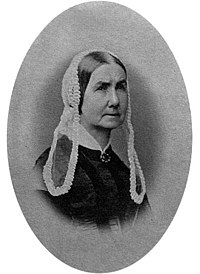Motherhood
— the Oldest Profession
By Micki Peluso
This Sunday mother's throughout the country will be honored
in many and various ways. Toddlers and preschool children will cheerfully drag
their mothers to their favorite fast food places and older children will escort
them, with great decorum, to restaurants with actual dinnerware. The majority
of children will serve their mothers breakfast in bed, a calamitous tradition
that refuses to die. Adult children with children of their own will have
greater reverence for their mothers, graced with understanding and empathy. Mothers
will righteously accept the presents, cards, flowers and candy, and promises of
exemplary behavior in the future. She has always and will continue to deserve
the esteem bestowed upon her by her family on this one honored day of each
year.
Motherhood, while fulfilling in ways too numerous to mention,
has never been easy. Today it is even more difficult due to the diverse roles
played by the 21th century mother. Some mothers are the sole support of the
family; others work to supplement insufficient incomes, while many choose to
balance a career with caretaking — all monumental achievements. Some households
with dual incomes have learned to share the ongoing chores of home maintenance
and child care, but it usually falls to the mother to be the primary nurturer,
manager, coordinator and ‘gopher’. In spite of reports on ‘burnout’ among
working mothers, and ‘latchkey’ kids left alone too much, many American women
are proving themselves capable of being both mother and working woman, placing
the emphasis on quality versus quantity time with their children.
However, a small percentage of women have elected to forgo
their careers, reasoning that careers can be resumed, but childrearing is a onetime
occupation. Due to the trend toward women bearing children later in life, some
women have worked and established careers for 10 or 15 years before having
children. The skills they’ve attained are often utilized in creating home
enterprises and small businesses, allowing them time with their children.
Unlike Father's Day, which was erratic in its installment, Mother’s
Day was accepted with enthusiasm. In May of 1907, Anna M. Jarvis of Philadelphia
was inspired by the idea that at least once a year children should pay tribute
to their mothers. She organized a special Mothers church service and the concept
quickly spread to other churches. By 1911, the observance was widespread,
including every state in the union, plus Canada, Mexico, South America, Africa,
China, Japan and several islands. Leaflets proposing certain exercises were
printed In 10 different languages and distributed to various countries. What
the leaflets said in part was: “A day that has shown that it has heart and
living interest for all classes, races, creeds, native and foreign-born, high
and low, rich and poor, scoffer and churchmen, man, women and child, is Mother’s
Day, observed on the second Sunday of May. The common possession of the living
world is a mother . . . .”
A Mother's Day International Association was incorporated in
December of 1912 to promote a greater observance of the day. The following May,
the House of Representatives unanimously adopted a resolution calling upon all
government officials to wear a white carnation in celebration of Mother's Day.
In 1914, Congress designated Mother's Day as an official holiday and asked
Pres. Woodrow Wilson to display the national flag on all public buildings. On
May 9, the president issued a proclamation asking the people to follow suit and
display flags on their homes as ‘a public expression of our love and reverence
for the mothers of the country’. The wearing of white carnations on Mother's
Day was modified to distinguish living mothers from those deceased. White
flowers were worn by the motherless and red flowers by children with living
mothers. Gift-giving by children became popular, especially homemade gifts and
cards. One gift in great demand for Mother's Day was the reproduction of
Whistler’s portrait of his mother, the most famous mother portrait of the
times.

Ever since Eve rocked the cradle that begat civilization, mothers
held an almost mystical place in society. Research shows that even the caveman,
while chauvinistic to the nth degree, cherished and protected his mate, knowing
instinctively that without her the clan would become extinct. The cavewoman was
healer, food gatherer, herbalist and fur-skinner, as well as mother. The custom
of holding festivals to honor motherhood dates back to the ancient Greeks who
worshiped Cybele, mother of the gods. Rome adopted the tradition around 250 BC
and celebrated the festival of Hilaria on the Ides of March. The festivities
lasted three days and included rites in woods and caves, significantly different
from modern celebrations.


Thank you for enjoying the article. I have more like this on my blogspot but when Sharla adds the pictures it makes such a difference. Thanks Sharla for another post showing my article off to much better entertainment through your pictures which speak as words.
ReplyDeleteMicki www.mallie1025.blogspot.com/
Jadwal Tarung Adu Ayam SV388 16 Maret 2019 di Situs Judi Sabung Ayam Online Melalui Agen Resmi Taruhan Sabung Ayam Live Asli Thailand.
ReplyDeleteSitus Judi Sabung Ayam Online SV388 Merupakan Situs Judi Asal Thailand Yang Sangat Terkenal Dengan Permainan Sabung Ayam Yang Fair dan Menghibur Para Penonton Judi Sabung Ayam.
Untuk Info Lebih Lanjut Bisa Hub kami Di :
wechat : bolavita
line : cs_bolavita
whatsapp : +628122222995
BBM: BOLAVITA